








Lucy Gellman | July 9th, 2025
Harriett Alfred and Patrick Smith always said they'd leave Cooperative Arts & Humanities High School together. Now, they’ve made good on their promise—and are looking at the professional and personal chapters that lie ahead for both of them.
Alfred and Smith, who were at the school for 38 and 37 years respectively, retired from Co-Op at the end of June, following the school’s graduation at the Shubert Theatre last month. In almost four decades together, they have brought up whole generations of musicians and music educators, from Latin Grammy winners and aspiring Broadway performers to classroom teachers who plan to carry on their legacy.
“It’s a bit of a shock, and it makes me wonder what’s next in our district and our country,” said Co-Op co-founder Keith Cunningham at a retirement party at Bear’s Smokehouse Barbecue in June, raising a glass to both Smith and Alfred. “I got very lucky in finding people who are essentially still there. I still remember hearing talk from kids in the hallways, like, ‘Wow, they are so good.’”
“It feels like I served my purpose,” said Smith. “I’ve shared love with a lot of people, and made people feel a lot of love ... Harriett and I do not mourn the past, we do not fear the future. We are just here now."
Smith teaching in 2022, shortly after he was named a semifinalist for the 2023 Music Educator Award by the Recording Academy and Grammy Museum.
For both—who are sometimes mentioned simply as MrSmithMsAlfred—it marks a bittersweet transition. In 1987, Alfred arrived at New Haven’s Truman School, where she ultimately taught for a decade. At the time, she was a freshly minted Hampton University grad, and had heard about New Haven from then-Superintendent John Dow. And something about the city, from the moment she stepped foot in a classroom, stuck.
Part of that was timing. In the 1980s, New Haven was offering a minority recruitment program that reached out to schools like Hampton, a historically Black college (HBCU) in Virginia. While Alfred was skeptical at first—she had wanted to be a singer, and it was only at the gentle urging of her mother that she pursued music education—the timing ultimately seemed divine. She needed somewhere to work, “and the door just opened,” she remembered.
Brenda Thomas, who went on to become the principal at the Polly T. McCabe Center, stepped in to help her find housing. Lola Nathan, who was then the assistant principal at Truman, had an extra room in her home and a way to get to school. For years, the two carpooled together, and it saved Alfred the pain of having to find reliable transportation right away.
“I loved my children at Truman!” Alfred remembered at Bears, as Co-Op teachers
and alumni trickled in, congratulated her and Smith, and tucked into plates of sticky ribs, chicken wings and cornbread. After years of preparing to teach, she realized how much she actually loved public education. She still has the hanging wall calendar from that first year.
The love, it turned out, was mutual: Alfred was often students’ first musical touchpoint, and it was a role she took seriously. Musician Marcos Sánchez, who went on to win a Latin Grammy, still remembers meeting her at four years old, and realizing that he wanted to be a musician.
After she heard him play the piano in her classroom—he was forever trying to get on the keys, and one day succeed— she tapped him to accompany the school’s choir and recorder ensemble. She told him, many times over, that he was a natural.
“She really made me really feel like I was a musician,” said Sánchez, who went on to become Smith’s band student at Co-Op (more on that below). “Soon I realized that’s what I wanted to do, and Ms. Alfred knew it from day one.”
But something still tugged at Alfred: she adored her work “but I wanted to stretch my repertoire,” she remembered. So when she got a call about Co-Op from Dr. Regina Lily-Warner, who for years served as the supervisor of music for the New Haven Public Schools, she knew it was time to make the leap. The year was 1997; CoOp was still at 444 Orange St., where New Haven Academy now stands.
“Regina said, ‘Just get the kids singing. Engage them. I want to give them what you got,’” she remembered.
And so she did. Within a month, they were singing with the Langston University Choir. In the next decades, she would transform the program, from seasonal concerts in long, oxblood-colored choir robes to the school’s tradition of “Parking Day.” No sooner had she wished for an ally than she got one: Smith arrived at the school a year later.
“That was my work husband,” she said with a smile. “We pretty much built the program.”
In those early years of Co-Op, “it was thrown together,” Cunningham remembered of the music department. Before Smith and Alfred, there had been a rotating slate of educators, none of them especially good. “The people that we had were not folks that had extensive musical training. It takes a real skill if you are a talented musician” who can also work with students as an arts educator.
Smith and Alfred, who became fast friends, were both. Before Smith arrived at the school in 1998, he wore many hats, from director of bands at Yale University (where he also earned his graduate degree in music) to a music educator for the North Haven Public Schools. When he arrived at Co-Op in 1998, there were only five kids in the band, and no blueprint for

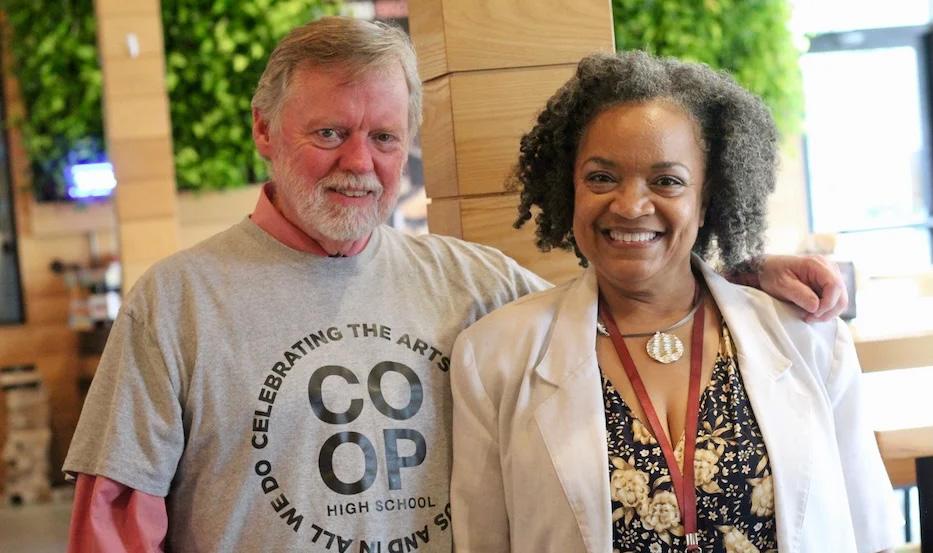
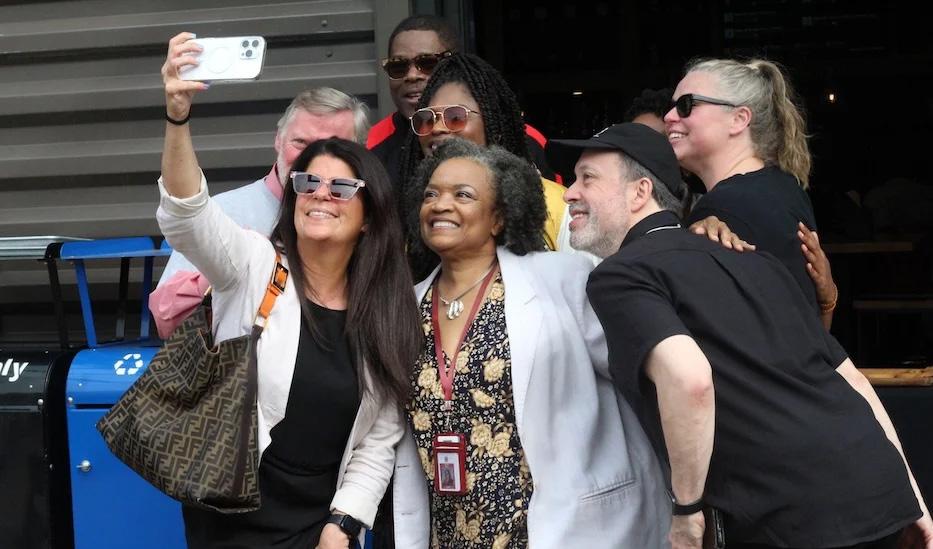

a formal program.
Working with Alfred, Smith grew that five-member group to a 65-piece wind ensemble, two 25-piece jazz bands, and a 45-piece orchestra. Alfred, meanwhile, built a 100-voice choir with seasonal shows that now feel more like a stop on the Cowboy Carter tour. With the theater department, both also built out the school musical, making it into a glimmering production with a full pit and soaring vocals. Meanwhile, the two became inseparable—and deeply beloved by dozens, then hundreds, then thousands of students who passed through the school.
Sánchez, who was one of those first five students in the band, saw that transformation in real time. During Sánchez’ time at Co-Op, Smith had students record an album every year, each of them responsible for a track. If students needed to stay late, he stayed there with them, then shuttled them home in his little blue Subaru.
In the process, he became not just a mentor, but also a confidant, life coach, and second father figure to hundreds of students. Decades later, Sánchez still calls him for advice, on everything from music production and the finances of being an artist to parenting.
“Smith loves music obviously, that’s his passion, but he’s interested in more than the music part,” Sánchez said. “He’s really paying attention to the human side of things, and how we can use music to make an impact in other parts of people's lives. He could have done anything with his talent, and he chose to stay there and be part of something even greater.”
The work has come with plenty of challenges, both teachers added. In almost four decades, the two have weathered multiple superintendents, administrators, and shifts at the district, including the sudden transfer of the school’s arts director to Betsy Ross Arts Magnet School this spring.
Five years after Alfred started at Truman in 1987, Dow retired, making way for Superintendent Reginald Mayo, who served the district for two decades before retiring in 2013. But Mayo’s departure ushered in a rotating door of administrators—Garth Harries, Carol Birks, Iline Tracey and Madeline Negrón, with a return from Mayo in the interim between Harries and Birks.
They’ve watched arts education and retirement benefits take a hit at the district, including in a round of proposed teacher cuts that never came to pass earlier this year. They’ve watched the school, a tight-knit arts community, suffer immense loss, including alumnus Henry Green in 2018 and student Camryn Gayle, a dancer whose death touched students in every department, in 2021.
But none of those obstacles, Alfred said, may have been as immediate as the pivot to remote learning in March 2020, as the Covid-19 pandemic hit New Haven. When schools announced that they would be closing their physical doors in 2020, Alfred struggled with the eerie quiet of isolation, and the task of conducting a choir online. Smith worried about his
by Adam Walker
Norah Laughter, a rising senior and American Studies major at Yale and current Ward 1 Democratic Town Committee co-chair, announced Wednesday evening that she will run for Ward 1 alder – becoming the fourth Yale undergraduate to enter the race so far.
Laughter, 21, joins fellow Democrats and fellow Yalies Rhea McTiernan Huge, Jake Siessel, and Elias Theodore in a bid to replace incumbent Democrat Kiana Flores, who decided not to run for a second two-year term. Flores has endorsed McTiernan Huge in the race.
With four active candidates, the contest is shaping up to be one of the most competitive Ward 1 alder races in recent memory.
Surrounded by roughly a dozen supporters at her campaign launch near Yale’s Phelps Gate on College Street, Laughter grounded her candidacy in personal hardship and a broader call to organize against systems of inequality. She said she plans to officially file her candidacy on Thursday.
In a speech that wove together her Kentucky upbringing, financial aid struggles, and campus labor activism, Laughter positioned herself as a candidate who understands the material pressures faced by both students and New Haven workers. She recounted her sophomore-year scramble to find on-campus work an effort that bypassed the student employment portal entirely. Instead, she emailed former professors directly to ask about any available entry-level jobs
That outreach led to a position in the history department, where she worked with the Yale Group for the Study of Native America. The search for employment, she said, unfolded during a period of mental health strain, but ultimately deepened her commitment to collective action.
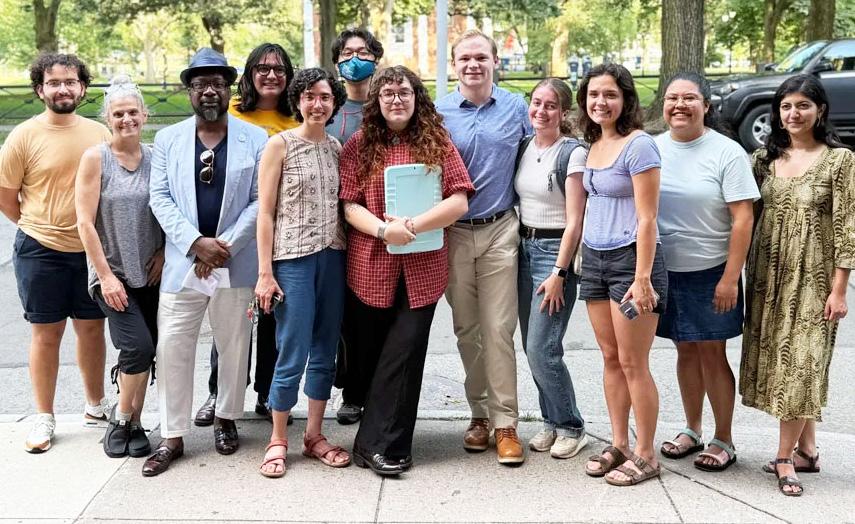
“What pulled me through was finding community and support by banding together with others who also felt the weight of Yale’s broken promises,” she said.
Laughter described her home town of Russellville, Kentucky as small, working-class, and gutted by the coal industry and right-wing politics. She said she came to Yale already skeptical of institutions that consolidate wealth while underdelivering for the people who sustain them. She pointed to the Schwarzman Center named after Stephen Schwarzman, CEO of Blackstone and a Trump mega-donor as emblematic of the contradictions between Yale’s public mission and its financial alliances.
Laughter praised the ongoing work of
local coalitions such as New Haven Rising and Students Unite Now, groups she said have helped secure key wins like increased local hiring, greater financial contributions from Yale, and student aid reforms. If elected, she said she would prioritize racial equity, affordable housing, mental health resources, and the need to center student workers and residents alike in city decisions.
“I’ve come to love this city and the people who welcomed me in shared anger,” Laughter said. “My love for New Haven has made me bolder.”
Two speakers at the campaign launch underscored that commitment. Shams
Goodwin, a room service server at the Omni New Haven Hotel and a recent strike participant, praised Laughter’s solidarity with workers.
“During the strike, she showed up. Not just once, but many times. Even better, she brought lots of friends to the picket line during the day and at night,” he said. “She clearly shows up for workers on and off campus … That’s the kind of alder I’d like to see.”
Tenzin Jorden, a Ward 22 co-chair who has worked alongside Laughter in the Democratic Town Committee, also spoke at the event and highlighted her record of organizing on and off campus. “Norah has
consistently participated in often invisible work that makes local change possible,” Jorden said. “She is principled, fiery, and deeply caring. She knows how to spark people to action and how to be consistent. We need representatives who get angry at injustice, like she does.”
In an interview with the Independent, Laughter said her campaign is grounded in the coalition she has already helped build. “I have organized to build capacity with students who are engaging with the fights in New Haven for a fully funded city,” she said.
She emphasized that she is running on a platform that includes affordable housing, good union jobs, and youth and educational opportunities. Laughter also highlighted the importance of Yale students in leveraging power to hold the university accountable.
“Ward 1 has a lot of students and it’s mostly Yale. Students occupy a very specific place in the dynamic of the city where they can leverage power against Yale to make them pay their fair share,” she told the Independent.
In addition to her organizing work, Laughter is currently working on her senior thesis in American Studies, which explores social movement coalition-building in 1970s and 1980s Louisville, Kentucky. She is collecting oral histories from former organizers involved in everything from anti-apartheid protests at the University of Louisville to local Rainbow Coalition campaigns.
Laughter said that the key to boosting student turnout is grassroots organizing empowering students to recognize their personal stake in local issues and helping them feel confident sharing their stories.
She added that she hopes to engage more students in the political process and ultimately increase voter participation in Ward 1.
by Donald Eng
HARTFORD, CT — State and community health officials said patients are the big winners under an agreement to boost Medicaid reimbursement rates by about $80 million over three years.
Representatives from Connecticut’s community health centers, legislative leaders, and Gov. Ned Lamont announced the deal publicly Wednesday at the Capitol.
“Here in Connecticut we are making key investments in primary care, dental, and behavioral health,” Lamont said. “Our community health centers are a lifeline for our residents, providing care to all patients regardless of their ability to pay, and this agreement
helps to provide sustainable and reliable care for those who count on them.”
The agreement will phase in the increases by June 30, 2028. The deal also clarifies the process for these centers to request rate adjustments based on the scope of services they offer and authorizes collaboration between the state and the centers to develop alternative payment models.
The community health centers serve about 440,000 people combined each year.
Department of Social Services Commissioner Andrea Barton-Reeves said the additional funding would position community health centers to continue providing value-based care and improve patient outcomes and community

health. She called the centers “essential partners in delivering high-quality, affordable health care to all residents.” She added that the centers were “always present, all the time, for everyone.”
Mark Masselli, CEO of Hartford-based CHC, Inc., the largest community health center in the state, agreed, saying his center provides care to “everyone who walks through our doors.”
State Rep. Jillian Gilchrist, D-West Hartford, also touted the universal care aspect of community health centers, which, “at their core, believe access to health care is a human right.”
By Dr. David Asbery, President of Fixing Fathers, Inc.
As men, we wear many hats—provider, protector, mentor, and leader. But there’s one role that often gets overlooked in the hustle and bustle of life: being present. In a world that constantly pulls us in a million directions, the simple act of showing up for our families and communities has never been more important.
When I started Fixing Fathers, Inc., I had one goal in mind: to help men reconnect with their families and rediscover the joy of fatherhood. Over the years, I’ve seen firsthand how transformative it can be when a father decides to be fully present—not just physically, but emotionally and mentally as well.
Why Presence Matters Studies show that children with involved fathers are more likely to succeed in school, have higher self-esteem, and develop healthier relationships. But beyond the statistics, being present sends a powerful message: You matter to me. It tells your kids that they are loved, valued, and worthy of your time.
For our communities, the impact is just as profound. When men step up and engage, they become role models—not just for their own children, but for every young person who’s watching. Your presence can inspire a child to dream bigger, work harder, and believe in themselves. How to Be Present Being present doesn’t mean you have to be perfect. It’s about making small, intentional choices every day. Here are a few ways to start:
1. Put Down the Phone: When you’re with your family, give them your undivided attention. Those texts and emails can wait.
2. Create Traditions: Whether it’s a weekly game night or Sunday morning pan-

cakes, traditions give your family something to look forward to and cherish.
3. Listen Without Judgment: Sometimes, your kids just need to be heard. Let them share their thoughts and feelings without jumping in to fix or criticize.
4. Show Up for the Little Things: It’s not just the big moments that matter. Be there for the soccer games, the school plays,
and the bedtime stories.
The Ripple Effect When you’re present, you’re not just changing your family—you’re changing the world. Your kids will carry the lessons they learn from you into their own lives, and the cycle of love and leadership will continue. So, to all the fathers, uncles, brothers, and mentors out there: I challenge you to take a step
back and ask yourself, Am I truly present? If the answer is no, it’s never too late to start. Your family and your community are waiting for you.
At Fixing Fathers, Inc., we’re here to support you on this journey. Together, we can build stronger families, stronger communities, and a brighter future for the next generation.


John P. Thomas Publisher / CEO
Babz Rawls Ivy Editor-in-Chief Liaison, Corporate Affairs Babz@penfieldcomm.com
Advertising/Sales Team
Keith Jackson Delores Alleyne John Thomas, III
Staff Writers Christian Lewis/Current Affairs Anthony Scott/Sports Arlene Davis-Rudd/Politics
David Asbery / Tanisha Asbery
Jerry Craft / Cartoons / Barbara Fair
Dr. Tamiko Jackson-McArthur
Michelle Turner / Smita Shrestha William Spivey / Kam Williams
Rev. Samuel T. Ross-Lee
Contributors At-Large
Christine Stuart www.CTNewsJunkie.com Paul Bass www.newhavenindependent.org
Memberships
National Association of Black Journalist
Development Council, Inc.
The Inner-City Newspaper is published weekly by Penfield Communications, Inc. from offices located at 50 Fitch Street, 2nd Floor, New Haven, CT 06515. 203-3870354 phone; 203-387-2684 fax. Subscriptions:$260 per year (does not include sales tax for the in State subscriptions). Send name, address, zip code with payment. Postmaster, send address changes to 50 Fitch Street, New Haven, CT 06515. Display ad deadline Friday prior to insertion date at 5:00pm Advertisers are responsible for checking ads for error in publication. Penfield Communications, Inc d.b.a., “The Inner-City Newspaper” , shall not be liable for failure to publish an ad or for typographical errors or errors in publication, except to the extent of the cost of the space in which actual error appeared in the first insertion. The Publisher reserves the right to refuse advertising for any reason and to alter advertising copy or graphics deemed unacceptable for publication. The entire contents of The Inner-City Newspaper are copyright 2012, Penfield Communications, Inc. and no portion may be reproduced by any means without the written permission of the publisher.
by Sonia Ahmed
Woog and Fon stopped by East Street on their motorcycle road trip from Washington, D.C. Thursday to smoke a joint and join a block party hosted by the neighborhood’s new cannabis dispensary.
Those two men who asked to be identified only as Woog and Fon for this article stood outside Chief Wifey’s food truck, which was one of many vendors brought to the Mill River block for a community event called Lit Lot, hosted by Kebra Smith-Bolden’s LIT Dispensary.
Smith-Bolden opened that legal adultuse cannabis dispensary in May. Thursday’s event, which was from 5 p.m to 9 p.m., had a live DJ and various vendors selling books, desserts, t shirts, and more. Lit Lot will take place on the second Thursday of each month.
Woog and Fon, who had arrived via motorcycle, told the Independent during an interview Thursday that they had stopped by after one of the block party’s organizers encouraged them to come in. They’re both from D.C. and said they were taking a long road trip, and had already visited New York and New Jersey.
Fon got a book from one of the vendors, as well as cake from another, before taking a look at Lit dispensary’s selection. Woog said they had a good selection, but he was more partial to weed from his home city because he feels it’s stronger. He added that he enjoys smoking because it relaxes him and calms his nerves.
Rocky Rose, one of the Lit Lot vendors Fon had stopped by, sold college Greek Life-themed erotic books that she had written, like Initiation and The Freak in Me, during Thursday’s fest. “I like to push the envelope a little,” she said. Rose said she used to work for the Inner-City News. She also sold non-erotic books, like Unstoppable Me, which Rose described as a 90-day journal targeted towards teenage girls to help them develop their confidence and self-love. Rose said she wants to “remind young girls that they matter.”
Julise Penn was another vendor at the event, selling various baked goods. Her stall, called J. La Nay, touted Dunk-aroos cookies that are dunked in frosting and cake pops, and more. Penn, who works at Yale, said that this event was a good fit for her business.
Charice Darby was selling shirts, tumblers, holsters, and more at her “Charice’s Creation” stall. Darby said she started her business during the pandemic, as being a nurse during that time made her sad. The business, which was originally conducted on her front porch, was doing well, and she decided to continue. “I love being part of this community,” she remarked. Smith-Bolden said she organized Thursday event to help small businesses, and also get some support for her dispensary. “This is a community effort,” she said. Smith-Bolden also plans to have events such as yoga and karaoke throughout



July. She said her most popular products are cannabis flower, and the most popular brand is Affinity Grow.
For those who don’t smoke, LIT also sells merch like t shirts and crewnecks, Smith-Bolden added. “This is a worthy cause to support,” she said about Thursday’s party.
Essence Little was shopping at the var-






ious vendors when interviewed by the Independent. Little said she doesn’t smoke much, but had found out about the event through her friend that works at the dispensary. She had bought some pre-rolled joints and was excited to try them. The customer service at LIT, she added, was great, and she’d stop by again.








































Lucy Gellman
Nine-year-old Michael Goubourn studied the image before him, taking in every detail. On the open page, a boy named Brian sat by himself in the cafeteria, eyes turned toward several kids his age. Beside him, everything was in bright color: the other kids’ t-shirts and lunchboxes, the brown paper bags and bowls of food, the ponytails and close-cropped haircuts dotting the room.
But Brian was in grayscale, pale as a ghost.
“How is he looking like that?” Michael asked. Around him, snippets of Born On The Water and How Do You Spell Unfair? drifted through the air, as dozens of books opened to their first pages. Dragonflies, their wings diaphanous and vibrating, dipped down toward the grass. Michael, not easily distracted, kept on looking at the page.
Michael is a student at Worthington Hooker School, where he will start the fifth grade next month. Brian is a fictional character in Trudy Ludwig’s The Invisible Boy, a children’s book about small acts of kindness published in 2013. Friday morning, they came together for Leadership, Education, & Athletics in Partnership’s (LEAP) 23rd annual Read-In on the New Haven Green.
The event, which turns the Green into a cacophonous sea of blue and orange-shirted bibliophiles, has become a joyful celebration of literacy, in which LEAP’s campers meet dozens of people from across the city and spend the morning soaking up stories. This summer, that included the 940 LEAPers who are learning across eight citywide sites, from Dwight/Kensington to Dixwell to Quinnipiac Meadows.
“This is me giving back to my community,” said volunteer reader and artist Tracey Massey, who credits a “big sister” with turning her on to the magic of reading when she was a kid growing up in New Haven. “When I became a mom, I built a library for my children. I knew how important it was for them to read. I was these little kids once.”
As LEAPers fanned out across the Green, Massey settled into a sunny spot, spreading out a bolt of shiny, textured taupe fabric for them to sit on. Three years into doing the read-in, she said, she particularly likes working with young boys, who are just on the cusp of adolescence. Friday, she paired up with a group of rising fifth graders from Dixwell, who are normally based out of King-Robinson Inter-District Magnet School.
As she pulled out The Invisible Boy, she greeted the group, listening for a few quiet hellos in return. In front of her, Michael looked carefully at the first illustration, in which a small boy—or rather, the ghost-like impression of a boy—followed a schoolteacher through the hall. Behind him, nine classmates trailed in brilliant

color, one reaching her small hand to the sky as she let out a scream.
“Can you see Brian, the invisible boy?” Massey asked, reading from the book. To her right, 10-year-old Jovon Hammi leaned in to get a closer look. “Even Mrs. Carlotti has trouble noticing him in her classroom. She’s too busy dealing with Nathan and Sophie.”
Massey turned the page, noting how much space some of the other students seemed to be taking up. There was Nathan, his decibel-shattering voice slicing through the classroom. There was Sophie, who whined her way through entirely too much of class. There were his peers, who seemed to miss him every time they picked a team or looked for a lunch table or had a birthday party.
Massey turned the page, and Brian was sitting alone, a smile on his face as he began to draw. Designs bloomed in every direction: reptilian creatures scaling apartment buildings, aliens ready to duke it out in outer space, scowl-faced pirates and a Superman look alike, “with the power to make friends wherever they go.” She turned the page again, and the teacher was introducing a new student named Justin, who seemed just as quiet and unsure as Brian was.
“How many of you had a situation like that?” Massey asked, looking up from the book. “You had a new kid come into class and you were trying to figure out whether they were cool or not?”
“Me!” Jovon said. “That happened at my school.”
Massey grew serious. On the page, kids were laughing at Justin because he had brought beef bulghoki, a Korean dish bathed in the salty-sweet of soy, rice

wine, sesame and garlic, to lunch. Brian sat alone at a table nearby, wondering if being teased was worse than being invisible. Massey pointed out both boys, one staring into his bowl of food as the other looked ready to cry.
“Some people look at you and it makes you feel like you’re not being seen,” she said, noting how ashen Brian appeared. She took a moment to look over the group, searching for a flicker of recognition, or an impromptu comment. When none came, she turned back to the page. Back in the world of the book, the teasing hadn’t sat right with Brian. He slipped a note into Justin’s locker, offering a kinder take on the bulghoki.
“He’s, um—” Michael pointed at something and trailed off momentarily. On the page, Brian’s sleeves had turned green. He had little red circles on his cheeks and a shock of yellow hair
“Now that they’re noticing him, he’s turning back to color!” he finished. Massey nodded approvingly, a smile spreading across her face.
And he was. As Brian and Justin became friends, his world shifted from black and
be a person who is just a little insecure in a new situation.
That message echoed for Jhyonne Sutton-Stevenson, a rising fifth grader at Davis Academy for Arts and Design Innovation Magnet School. When Massey began to read, he said, the book transported him back to his time at Barack Obama University Magnet School, where he made friends with a new student who had a speech impediment.
Just like Brian and Justin, he said, they became close after Jhyonne saw him getting teased, and told other kids to stop. Years later, they still play video games together.
“Everybody was being so mean to him and, I like, I had said, ‘That’s not cool at all!’” he recalled. “If you had a disability, you wouldn’t want someone to talk about you! You don’t know what someone’s going through.”
Massey, listening as she contemplated a second book, soaked it all in. During her childhood in New Haven—"it was a different New Haven,” she said—a student from Yale who volunteered for Big Brothers/Big Sisters took Massey under her wing. Together, the two spent hours reading books, visiting Yale’s sprawling campus, and going to lunch spots like the old Duffy’s Tavern.
She still remembers getting her first novel for Christmas, and realizing that reading could unlock whole new worlds. So for her birthday a few years ago, she vowed to start volunteering as a way to give back. She hasn’t stopped since.
“Next year I’m gonna see you guys again!” she said before the group headed across the Green to pick up lunch. “Continue to be kind. Continue to make lots of friends. And stay smart!”
white into shades of orange, green, and blue. LEAPers, forgetting themselves for a moment, gave into the sheer delight of the scene, with wide, clear eyes and just-slightly goofy smiles. One was so excited that he later gave Massey a little squeeze.
“The new kid, you know, just made friends with Brian!” Massey exclaimed. “How awesome is that? Any time there’s a new kid at school, we want to be polite to them—”
“Make them feel welcome!” Michael chimed in. Massey nodded again in return.
Jovon, who had been fairly quiet, said the book resonated with him. Two years ago, a new student started at Booker T. Washington Academy, where he goes to school and will be a fifth grader in the fall. At first, “he was always mean to me,” Jovon remembered. He made a choice to keep responding with kindness.
“I gave him stuff, I would say kind words to him,” Jovon remembered. Now, the two are close friends—as are their moms. It’s taught Jovon that beneath a cruel remark or school bully, there may
Dixwell Site Director Darcus Henry, who first enrolled in LEAP when he was six years old, said he was thrilled to see the event continue to grow, particularly as New Haven continues to navigate its way through a literacy crisis. Two decades ago, LEAP was the first place that Henry fell in love with books, from the Captain Underpants series to Diary Of A Wimpy Kid.
Like Massey, he’s also trying to give back to his community through his work. From the time he was six to the time he was 13, Henry dedicated himself to LEAP, falling in love with every aspect of the program. Then he returned as a counselor in high school, and has stayed on and off in the years since.
He loves that the program still follows D.E.A.R.—Drop Everything and Read— which helped turn him into a bookworm. “LEAP is love, LEAP is life, LEAP is what made me who I am today,” he said. Earlier that morning, he had lived that mission, hyping students up before they went off to read in different corners of the Green. “Knowledge is power! This is the only time when we get to see every kid at LEAP.”
Lucy Gellman, Editor, The Arts Paper newhavenarts.org
The words floated over Frank Street, voices joining in until it seemed like the whole block was singing along. Si te preguntaran / donde es que yo vivo / no le des mi nombre / ni tampoco mi apellido. On one side of the sidewalk, the sharp, round rattle of the maracas opened up to rolling drums. On the other, the smell of pork carnitas filled the air, fragrant and thick.
The words repeated, stronger and louder this time. Si te preguntaran / donde es que yo vivo / no le des mi nombre / ni tampoco mi apellido. If they ask you / Where I live / Don’t give them my first name / Or my last name.
A fierce, sometimes fleet-footed call to action came to Frank Street Saturday afternoon, as members of Unidad Latina en Acción (ULA) hosted a block party and fundraiser supporting the family of Nancy Martinez, a Mexican immigrant who was arrested and detained by Immigrations and Customs Enforcement (ICE) on June 9, as her two young children watched in horror. In the weeks since, more ICE arrests have come to New Haven, separating multiple families in the process.
Martinez, who had lived in the United States for 15 years, is being held at the Wyatt Detention Facility in Central Falls, Rhode Island. Her 13-year-old daughter, Monse, said that she calls home every day, reminding her kids about appointments and trying to keep them calm.
Attendees, most of them neighbors with crisp $10 and $20 bills, raised over $1,800 for the family. To donate to support Martinez’ family, you can click here or Venmo @ulanh.
“I’m doing okay, but I don’t really feel okay," Monse said Saturday, while watching her brother go down an inflatable waterslide that had materialized in the driveway, a dinosaur roaring from his Jurassic Park t-shirt. “I’m just trying to get my mind off it. I’m trying to stay strong, for my little brother especially. Sometimes, he just cries on my shoulder.”
“It’s not right,” she added of the fear-mongering and increased violence toward immigrants that has defined the Trump Administration, almost always without due process. In the five weeks since that Monday morning in June, she’s had to hold her own grief alongside that of her family’s, and isn’t always able to talk about it. “It does get to a point where I want to cry,” she said.
To make extra money for her family, she has started a small business selling baked goods, flan and chocolate-covered strawberries. “It’s to get my mind off it,” she said. She credited her friends, all of whom know what’s happening in her life, with helping her try to stay motivated in the midst of a summer upended by grief. Around her, a mix of vendors, neighbors and artists focused on cultivating joy—and some sense of normalcy—as a form of resistance. Beneath a row of tents, kids waited on hamburgers, tostadas de tinga and gem-colored aguas frescas, their


hair slicked back after playing on an inflatable waterslide. Friends and neighbors embraced, catching up with their families between bites of food.
Monse, who watched neighborhood kids on the slide, peppered her shouts of “De cuidado! De cuidado!” with smiles, as if she was soaking it all in to remember the image later.
At a table for ULA, attendees stopped to sign up for information alerts and “Know Your Rights” trainings, including court accompaniments that the group is hoping to grow in the next weeks and months.
ULA Co-Founder John Jairo Lugo, who launched the organization in the early 2000s, said that he is bracing for increased ICE presence in New Haven, particularly after the passage of President Donald Trump’s supersized tax and spending bill earlier this month.
In the bill, Trump has allocated roughly $170 billion toward his immigration and border policy, a massive increase in funding that largely supports the removal
As he began to sing “México Lindo y Querido,” it seemed he was vocalizing what it meant to exist across two countries, both of them home, when they are separated by hundreds of miles and manmade borders.
Voz de la guitarra mía / Al despertar la mañana / Quiere cantar su alegría / A mi tierra Mexicana, he sang, and a few people swayed along in the street. Yo le canto a sus volcanes / A sus praderas y flores / Que son como talismanes / Del amor de mis amores.
Despite the humid afternoon air, he glowed in a purple traje de charro, studded with ornate silver buttons that glittered in the light.
While Xilotl normally plays with the group Mariachi Nuevo Son, he’d come as a solo act on Saturday. It felt like second nature to be there, he said: as an immigrant himself, he sees it as a responsibility to support other immigrants. Like fellow members of ULA, he’s horrified by the increase in deportations across the country.
“I just like to support,” he said. “They think we are terrorists and criminals. No. We just come to work and support our families.”
A few feet away, members of Proyecto Cimarrón waited to take the street-turnedstage, hands resting on their large Barriles de Bomba and hanging over their long skirts and sneakers. For just over three years, they’ve turned to the Puerto Rican tradition of Bomba—and its constant vision of liberation—as a teaching tool for the present. It is, as member Addys Castillo later explained, a music of resistance that has been used as a way to communicate for 400 years.
“Seguimos en la misma lucha [we continue in the same fight],” she said before the group performed “Fuego en Bucaná,” describing how enslaved Africans would send messages through the music. Then, switching to English: “We’ve never been a quiet people.”
and disappearance of migrants and the expansion of detention facilities, including to private prisons and jails. He has also ended Temporary Protected Status for Haitians, Venezuelans, Afghans, Cameroonians, Hondurans, and Nicaraguans, all groups that risk facing extreme violence if they are sent back to their home countries.
“When you see the news about California, you feel like nothing is going on here, but it is,” Lugo said. “Our feeling is that the situation is going to get worse. We feel like they are coming after us, and we need to be ready. Unfortunately, that’s the reality that we live in these days.”
Amidst that work, he added, the reminder of community may be been necessary than ever. At a microphone, musician German Xilotl launched into a mariachi serenade, his voice swelling as he dipped into standards like “Cielito Lindo,” “Los Mandados,” and “Mujeres Divinas.”
stitutional violations. “They’re acting with impunity and they’re violating people’s constitutional rights,” she said. “When people step up to document it, we’re finding that everything changes.”
On the sidewalk, the sound of drums and voices was infectious: people moved in place, swayed from the curb and on their lawnchairs, listened from stoops, and sang along. Down the street, two neighbors came out onto their porch and sat on the banisters, taking a video as their heads bobbed in time with the sound.
Monse, who seemed to know every kid on the street, scooped up one of her pintsized neighbors and began to walk toward his front stoop, listening all the while. Minutes before, he’d seen a trio of bees flying close to his arm, and begun to whimper as his hamburger fell to the pavement. Now, he was totally calm in her arms.
That’s one of the ways New Haven’s immigrant community will get through this, Lugo later said. As ICE expands its presence in Connecticut, he worries about how groups like ULA will keep up with monitoring, verifying and responding to arrests and detentions in real time (ULA's rapid response line is 475.323.9413). Raids are already taking place in broad daylight, at small businesses, courthouses and homes across the state.
“This is just two or three cases that we have on our hands,” he said. “What happens when we have 100? 200?” he said. “We have to start using our survival tactics.”
While most of those are secret, one is not: the necessity of neighbors coming together to protect the most vulnerable among them. That was clear back by the water slide, as longtime ULA members Rafael and Pablo gave out the last of their carnitas, slow-cooked pulled pork that they had prepared for the event.
As they sang, drums and footfalls joining the percussion, those words came to life over and over again. In “La Central,” which has become a staple in the Proyecto Cimarrón’s repertoire, musicians leapt between past and present, spinning song into story. The work, which refers to a sugar mill or sugar plantation, communicates where enslaved people plan to gather, a reminder that critical mass is a powerful and possible response to state-sponsored persecution.
So too in the group's final number, as member Kica Matos urged attendees to learn and pass on the lyrics “Si te preguntaran / donde es que yo vivo / no le des mi nombre ni tampoco mi apellido." As head of the National Immigration Law Center (NILC), Matos has led a lot of “Know Your Rights” trainings, she said. The phrase is just one thing neighbors should know and repeat “cuando la migra vendrá” (when ICE comes).
People—particularly U.S. citizens—can also help by doing court accompaniments and documenting ICE arrests, including with recorded video that lawyers can reference afterwards, when looking for con-
When Rafael heard about the fundraiser, he donated, seasoned, and cooked 110 pounds of pork to make sure the community was fed. Floridalma Morales, who is a friend and peer, also donated hundreds of tortillas from her Bright Street food truck, Tortilleria Tacaná.
“If we stay united, we will be stronger and our voices will be heard,” Rafael said in Spanish as Lugo translated. “We came here to live the American dream. Suddenly, they want to kick us out after our families have been working for so many years.”
Attendees Ariadne Leal-Pintor and her mom, Patricia Pintor, echoed that feeling. As supporters of ULA, it was a no-brainer for them to show up, they said. In the weeks and months to come, both hope to see more action from the wider New Haven community, from court accompaniments to more attendees at events like Saturday’s.
“We want to see the community more involved,” Leal-Pintor said. “They are involved, but we want to see them showing up.”
by Laura Glesby
Fair Haven alder candidate Magda Natal knocked on Cristina Torres’ Blatchley Avenue front door, hoping to earn her vote.
She found not only a new political supporter, but also a possible new camper at the weeklong camping trip she’ll help lead next week.
Natal, an English language teacher at Wilbur Cross High School, is running to represent Fair Haven’s Ward 16 on the Board of Alders. She’s challenging incumbent alder Jose Crespo in the Democratic primary. The primary election will take place on Sept. 9 at John Martinez school.
About 40 supporters from across the city gathered at Armada Brewing on River Street for Natal’s campaign kickoff celebration on Wednesday afternoon. They enjoyed pizza and cold drinks in the thick heat. Attendees included a contingent of New Haven teachers, Fair Haven advocates, and alders Frank Redente and Caroline Tanbee Smith.
Natal’s campaign manager her niece, Kayla Natal trained the group on how to knock on doors for the campaign, quoting Maya Angelou: “I’ve learned that people will forget what you said, people will forget what you did, but people will never forget how you made them feel.”
Soon, a small group of volunteers embarked on a canvassing mission. Natal knocked on door after door along Blatchley Avenue with New Haven Federation of Teachers President Leslie Blatteau.
Over the course of their canvass, Natal ran into a childhood friend she hadn’t seen in over 30 years. She also passed a Victorian house she remembered from her childhood “As I kid, I used to drive by and be like, I want that house!” that seemed to have fallen into disrepair. She left a video message on a Ring doorbell camera for a registered voter who wasn’t home.
She encountered residents who weren’t eligible to vote. She told one family in Spanish, “I am supporting immigrants and undocumented people,” providing her number in case they need any help in the future.
When Torres answered her door, Natal introduced herself. “I’m running to be alder of Ward 16,” she said. “I live in the same house I grew up in” on Exchange Street.
Natal explained that she’s a teacher, that she serves on the board of Fair Haven Community Health Care, and that she helps run the Big Turtle Village camping trip that is available for free to 60 Fair Haven kids each summer.
“I’d like an opportunity to make the neighborhood a better place,” Natal said. “I’ve lived here almost my life,” Torres responded. “I love Fair Haven. I love the community. I love the culture. I’m trying to buy a house here.”




Her main concern about the neighborhood, she said, is the level of public substance use she observes. She said she’s seen people using drugs while wearing no clothes at all right outside her home. “People do not have the resources,” she said, noting that she has kids in the house.
When Blatteau asked Torres how old her kids are, she responded that she has a 19-year-old, a 10-year-old, and a baby. She said that her oldest son just graduated from Wilbur Cross, where Natal teaches. “I’m so proud of him that he did actually graduate,” she said, noting that he’d been through a hard time.
“Being a mother is hard,” echoed Natal.
“I’m always there, there, there,” said Torres.
Blatteau noted that “teachers are really good problem-solvers” a quality that’s also helpful to have as an alder.
“Do you know who your current alder is?” she asked.
Torres recognized Crespo’s name, but said she doesn’t know him personally. She told Natal that she’d vote for her in the upcoming election.
Eventually the pair realized that Torres’ daughter attends the Big Turtle Village afterschool program run by Junta for Progressive Action, a program affiliated with the camping trip Natal has helped organize for over 20 years.
Torres had received a message that very day encouraging her to sign her daughter up for the overnight camp. But Torres had been hesitant, especially since her daughter can’t swim.
Natal reassured Torres that her kid would be all right. “I’m the mom of the camp,” she said. She said that she and the other adults watch every kid closely. For children who have a hard time being away from home, “I make them tea. I’m there.”
Some kids “struggle” with the new experience, she added, but “it builds character” and challenges them to grow. Torres said she wants her kids to grow up connected to their community. “I’ve always been shy about it,” she said, but she’s trying to get more involved in the neighborhood.
Natal encouraged Torres to come by Junta for Progressive Action later in the week, where she could learn more information and possibly sign up her daughter for the trip. This year’s camping trip starts next week, from July 14 through 18. There are still slots open, Natal said. “We’re taking kids at the last minute.”
After saying goodbye to Torres, Natal and Blatteau turned to resume door-knocking. “That made me excited!” Natal said. “I guess this is what it’s all about.”
The announcement of the increased funding comes at a time when programs like Medicaid are facing steep cuts in federal funding. Senate President Pro Tempore Martin Looney, D-New Haven, described the situation as “an eclipse and a tsunami at the same time.”
Lamont, though, said the rate increases would buy time for the state to prepare for future federal cuts, which are scheduled to take effect after the 2026 elections.
House Speaker Matthew Ritter, D-Hartford, also criticized the federal cuts, calling them counterproductive and unlikely to save the government any money since patients will wind up in emergency rooms.
“When you cut primary care, people still need it,” he said. “They’ll just find a way to get it that will be more expensive.”
Lamont, though, stressed that community health centers remained an effective treatment option for everyone in the state.
“We take care of you, no questions asked,” he said. “We found out during COVID, we’re all in this together. That’s the meaning of public health.”
House Republican Leader Vincent Candelora, R-North Branford, and State Rep. Tammy Nuccio, House Ranking Member of the Appropriations Committee, said they agree with Democrats that Medicaid reimbursements rates are a serious problem in Connecticut, but called Wednesday’s announcement “misleading.”
“They’ve picked winners and losers—prioritizing federally qualified health centers, while hospitals, doctors, dentists, and other providers continue to struggle with inadequate rates,” Candelora said in a statement. “Recognizing the seriousness of the problem, House Republicans proposed more than $137 million to improve Medicaid reimbursement rates across the healthcare system. But the final budget passed by Governor Lamont and legislative Democrats included nowhere near what’s needed to fix the problem.”
Much of the healthcare system and the citizens who depend on it will continue to suffer, Candelora said.
“We brought forward this plan in meetings with the Governor and his staff during the session,” said Nuccio, R-Tolland. “I’m glad the administration finally came around, but let’s be clear: this agreement wasn’t sparked by political rhetoric—it was driven by Republican leadership and a real plan to strengthen access to care for those who need it most.”

by Paul Bass
Eighteen-term incumbent New Haven U.S. Rep. Rosa DeLauro is the latest prominent Democrat to face a prospective primary challenge from a first-time candidate promising generational change.
Damjan DeNoble, a 40-year-old immigration, labor and civil rights attorney whose office sits across the street from DeLauro’s in downtown New Haven, filed paperwork Wednesday with the Federal Elections Commission to stage that challenge.
He’s looking to primary one of the nation’s leading Democratic lawmakers, the ranking member and former chair of the House Appropriations Committee. The election will take place next year.
DeLauro, who’s 82, won her first Congressional race in a squeaker in 1990. Since then she’s been unbeatable. Two Democrats publicly launched prospective primary campaigns against her, Michael Lawlor in 1990 and Bryan Anderson in 2017; given DeLauro’s deep support among activists and local elected officials, they didn’t make it to the ballot.
In an interview Wednesday, DeNoble did not criticize DeLauro or cite policy differences. Instead he argued that the time is right to take on long-serving in-
cumbents because of the challenges facing a fast-changing world.
“She has done a very good job for us. She is not the candidate that we need for the next 15 – 30 years of changes and fights we have ahead,” he said. “I’m running against Rosa DeLauro because it’s time for generational change. The problems we currently we have as a country will not take a short time to solve. For that we need new leaders.”
He cited the threat to jobs posed by artificial intelligence: “How do you solve the problem of employment when you’re looking at the double barrel of having fewer jobs due to artificial intelligence and offshoring, and looking at the possibilities of having no jobs? What are the laws and policies that keep our country stable?” He spoke of supporting “human-only job” laws.
“There’s no reason that we should sit around say, ‘Let AI take all our jobs.’ As my tort teacher said, ‘It’s our job to stop the ball from snowballing.’ ”
Asked for a comment about DeNoble’s candidacy, DeLauro reelection Campaign Manager Christopher Carroll stated, “Rosa intends to run for re-election and welcomes anyone that wants to run for the seat.”
Gen Z and Millennial activists nation-


wide have been discussing challenges to older incumbent Democrats even before last month’s surprise New York City Democratic primary victory by 33-yearold Zohran Mamdani inspired another wave of potential candidacies. Also this week State Rep. Joshua Elliott took the first steps to challenging incumbent Gov. Ned Lamont next year in a Democratic primary.
David Hogg, the 25-year-old Parkland school massacre survivor and gun-control activist, recently resigned from his post as Democratic National Committee vice-chair to focus exclusively on supporting these generational challenges. He did, in this Slate interview, exempt DeLauro as one of the senior-citizen lawmakers whom he would not support a challenge against, due to her progressive record. DeLauro has taken a leading role in speaking out against Trump administration policies. Click here and here for recent stories about that. Denoble, who lives in Guilford, declined to put an ideological label on his politics or to position himself to the left or right of DeLauro. He spoke instead of tackling issues within new frameworks. (“I’m not a democratic socialist,” he replied when asked about the Mamdani comparison.)
by Maya McFadden
New Haven Public Schools has hired Assistant Supt. Paul Whyte to serve as the district’s new chief of school operations.
Whyte’s transfer from the role of assistant superintendent for instructional leadership to the newly created chief of school operations was included in the information-only personnel report at Monday’s latest full Board of Education meeting, which was held at John C. Daniels School.
According to the report, which was presented on Monday by Supt. Madeline Negrón, the effective date for Whyte’s transfer is July 15.
Whyte told the Independent that a top priority in his new role is making sure the district’s school buildings are well maintained, “but that’s not the only part of operations.”
He said in the role he will meet with building staffers and look at issues directly, and then will push the district to act urgently to fix what it can afford. Beyond facilities, this work also includes overseeing the district’s food and transportation services.
School board members Edward Joyner and Andrea Downer praised
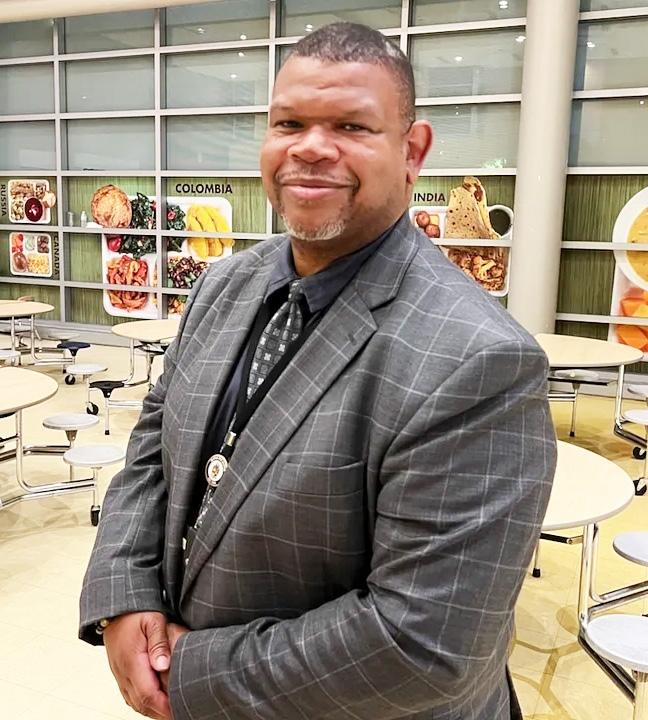
Whyte’s past work during Monday’s meeting.
Whyte’s former assistant superintendent role will not be going away, even as Whyte moves into the new job. (NHPS has four assistant superintendent positions, including Whyte’s. The district’s three other assistant superintendents are Keisha Redd-Hannans, Viviana Camacho, and Kristina DeNegre.)
“We still need the assistant superintendent role, which oversees schools, evaluates principals, advocates with central offices for the needs of schools, advises in the implementation of policy, manages crises, resolves complaints, etc.,” NHPS spokesperson Justin Harmon told the Independent.
“The assistant superintendents also take on special projects for the superintendent and provide support on key areas such as curriculum and instruction; hiring, training, and evaluating staff; managing budgets, and supporting special education, counseling, and health services. They provide leadership continuity if the superintendent is unavailable.”
Harmon also noted that because Whyte is transferring roles, his salary will remain the same as he moves
from assistant superintendent to chief of school operations. In April 2024, Whyte’s salary was $178,601. Harmon did not respond to a request for comment about whether or not Whyte’s salary has changed in the intervening year; Harmon also did not respond to a request for comment about how many internal applicants applied for the chief of school operations job.
In a comment provided for this previous Independent article, Harmon described the chief of school operations position as“a slight recast of an existing, funded and vacant position, which was called chief operating officer. The emphasis of the job is supporting schools’ operations, to help them maximize their own focus on instruction.”
The last employee to hold the job of chief operating officer was Thomas Lamb, who was put on paid leave in May 2024 and wound up resigning last October. Former top city official Mike Carter filled in as an operations and facilities consultant from last July through this March.
Whyte’s transfer comes after Whyte was a finalist for, but was ultimately not selected to become, Waterbury’s schools superintendent earlier this spring.


by Jisu Sheen
Long before her current role as Chismosa in Chief, an 8 year-old Soren Sierra would entertain herself by making fake interviews on Microsoft Paint. As she grew up, Sierra moved onto Instagram, pairing photos with moody quotes. Last month, the 23-year-old multidisciplinary artist celebrated the second edition of a dream she’s had her whole life: her own zine.
Chismosa zine features artists across Connecticut, with artwork ranging from photography to playlists, poetry, interviews, and more. Sierra calls it “a way to showcase my own art as well as what I’m inspired by.
.”In other words, “It’s a love letter to my state.”
Sierra is largely self-taught, powered by a desire to lift up the artists around her.
“I’m nothing without my inspirations,” Sierra said, describing how too often “we forget to be inspired by who we see, who we’re with.” She gathers zine contributions from her local circle of friends as well as her online Chismosa community.
“I’ve had this image in my head since January,” Sierra said of the cover to her second issue. She did the photoshoot in May, collaborating with New Haven photographer Idalys Dorantes Gómez and commissioning friend Sol Layfield (a.k.a. Solgemz) from Western Massachussetts to make a Virgin Mary necklace.
Sierra made the veil right before the shoot, sewing together the white lace from a table runner. Gómez brought a three-lev-

el golden crown she already had, and the two artists photographed model Bianca Santiago at Heaven Skatepark in Hartford. The cover was for a special issue focused on local Latin American artists, with flags representing the contributors’ different cultures and interviews highlighting the food they love, the fellow Latinx artists they want to uplift, and the traditions they
carry. Sierra’s aim was to create an outlet for artists to “talk about us the way that we deserve.”
Sierra likes to “bond over having a vision and seeing it through.” Her friendships often turn into artistic collaborations and vice versa. Contributions to her zine are a mix of solo submissions and concepts that turn into group projects with Sierra’s help.
“I’m more happy than ever with community here in Connecticut,” Sierra said. She remembers being inspired by Zoe Jensen and Mariana Pelaez of local zine Connecticunt, and now they’re friends and collaborators. The Connecticunt crew even offered to help Sierra with printing a suggestion she didn’t cash in on in the end.
“My big flaw as an artist is asking for help,” Sierra said. The way Chismosa has been unfolding, it seems Sierra will overcome that flaw in no time. When the residential building Sierra was planning to use as a launch party venue stopped holding events, Hartford’s Semilla Café took her in. Connecticunt posted about Chismosa on their social media, which Sierra credited as a huge help in getting the word out. Boston Post Road tattoo shop Vanaheim Tattoo has Sierra’s zine on their coffee table. One of their tattoo artists, who goes by Loop, created the iconic Chismosa logo gracing the cover of the zine’s first issue.
The logo appears on the cover as a back tattoo. Further down, the words “issue one” are also printed, as a practical effect in the photo itself rather than a digital addition. Loop used a tattoo stencil to print the words directly onto Sierra’s back.
As a finishing touch for the completed cover, Sierra tied a colorful string around the zine to act as a bikini string for her photographed back. It’s inspired by a bikini packaging concept from the ‘90s in Brazil. “I love a whole experience in my art,” she said.
“I feel like my back is my medium,” Sierra conluded as she flipped through her zine. She landed on a picture of her back, with letters and rhinestones spelling out
the phrase, “It sorta is what it is.”
“This is a piece of vent art,” she said, from “when I was crashing out, making the issue.” She sketched out the image from her mind and had friend Karla Oyola help arrange the letters and take the photo. So when will the next issue of Chismosa come out? It might not be for a while. “I don’t want it to be a mass-produced thing,” Sierra said, explaining she wants to take the summer to find inspiration and work on her own mini zines and poetry, to “get back into into that love for it.”
She doesn’t want to set up expectations that end up trapping her. Instead, Sierra plans to continue having fun, making connections, and publishing when she feels ready. “How can I disappoint anyone if it’s art that I’m proud of?” she said.
“It’s an honest beginning,” Sierra said and smiled, pointing at an interview with Joshua Sanchez, a.k.a. JadoreJoshy, from her second issue. “Yes, two answers are the same.” She will fix that in future print runs, so now is your chance to get your hands on a rare first-edition with the goof included.
Looking back on all she’s been able to create and facilitate this year, Sierra said she’s still working from “the heart of 12-year-old me, making cringey quotes on Instagram.”
You can keep up with Soren Sierra and Chismosa zine at @chismosazine and @ sorenisonline on Instagram, or grab a copy at the Zine for the Hart mixer at Semilla Café on Friday, July 25 from 7 to 9 m. or the New Haven Zine Fair from 12 to 5 p.m. on Sunday, Aug. 17 at the Bradley Street Bicycle Co-op.
by Jamil Ragland
HARTFORD, CT — Local youths will be going to work this summer to build important life skills, thanks to a partnership between Hartford, the state and local organizations.
Leaders from Capital Workforce Partners, the Connecticut Department of Labor, the Hartford Foundation for Public Giving and the City of Hartford announced $1.4 million in investments in programs to employ 800 Hartford youth this summer. Of that total, $1 million will come from the city and the balance from the Hartford Foundation.
That money is on top of $7 million that the state has budgeted for summer youth workforce development to be dispersed across the state.
The announcement came at Our Piece of the Pie (OPP), a nonprofit organization in Hartford that works with at-risk youth that is one of the participating providers for the Summer Youth Employment and Learning Program (SYELP), a six week program for students age 14-18. The program provides career training, mental health support, and credit retrieval help for students who have fallen behind in school.
“At any given point in time, there are over 20,000 jobs available [in Connecticut] to

individuals within the state, yet we’re challenged with ensuring that those employers have the talent that they need to meet those demands and at the same time give them the talent to expand their businesses with additional individuals,” said Alex Johnson, president and CEO of Capital Workforce Partners. “The Summer Youth Employment and Learning Program is a key program that provides young people with the opportunity to learn careers, learn work readiness skills, and understand the relationship between education and work. And it enables us to put them on a career path so that they can meet the demands that we have for them within our economy.”
Mayor Arunan Arulampalam said more than 3,000 young people in Hartford applied to SYELP, and that shows that the youth of the city are eager for opportunities to work and gain career training.
“The greatest stars of this show are the young people,” he said. “You guys are showing up. You guys are working each day to get better, to get smarter, to learn new skills and we appreciate that.”
The summer jobs are not just a job for now, but a pipeline to the careers of tomorrow, Arulampalam said.
As the state continues to grapple with the issue of disconnected youth highlighted in the 119K Commission’s Young People’s
Report, Eddie Cajigas, manager of community advocacy for the Department of Labor, called the youth employment program a win-win.
“It helps young people gain work experience, build networks, and earn a paycheck, and helps create a stronger workforce pipeline for employers,” he said. “While we hear about the impact of disconnecting youth, Capital Workforce partners, Our Piece of the Pie, and other organizations today are on the front line to help reconnect those young people to community, jobs, and their future.”
A number of the youth who will be participating in the youth employment program were present at the announcement. DJ Thomas, a youth leader with OPP who is a student at Manchester Community College, will be working at a youth site this summer. There he will work with younger children to help build their capacity as future leaders.
“People come here because of the help that they give you and the support you get,” he said. “You get help in so many different areas that you would never think that they can help you with, and I feel like that’s something that needs to be heard more, and more opportunities need to be given to more kids.”
by Adam Walker
Norah Laughter, a rising senior and American Studies major at Yale and current Ward 1 Democratic Town Committee co-chair, announced Wednesday evening that she will run for Ward 1 alder – becoming the fourth Yale undergraduate to enter the race so far.
Laughter, 21, joins fellow Democrats and fellow Yalies Rhea McTiernan Huge, Jake Siessel, and Elias Theodore in a bid to replace incumbent Democrat Kiana Flores, who decided not to run for a second twoyear term. Flores has endorsed McTiernan Huge in the race.
With four active candidates, the contest is shaping up to be one of the most competitive Ward 1 alder races in recent memory.
Surrounded by roughly a dozen supporters at her campaign launch near Yale’s Phelps Gate on College Street, Laughter grounded her candidacy in personal hardship and a broader call to organize against systems of inequality. She said she plans to officially file her candidacy on Thursday.
In a speech that wove together her Kentucky upbringing, financial aid struggles, and campus labor activism, Laughter positioned herself as a candidate who understands the material pressures faced by both students and New Haven workers. She recounted her sophomore-year scramble to find on-campus work an effort that bypassed the student employment portal entirely. Instead, she emailed former professors directly to ask about any available entry-level jobs
That outreach led to a position in the history department, where she worked with the Yale Group for the Study of Native America. The search for employment, she said, unfolded during a period of mental health strain, but ultimately deepened her commitment to collective action.
“What pulled me through was finding
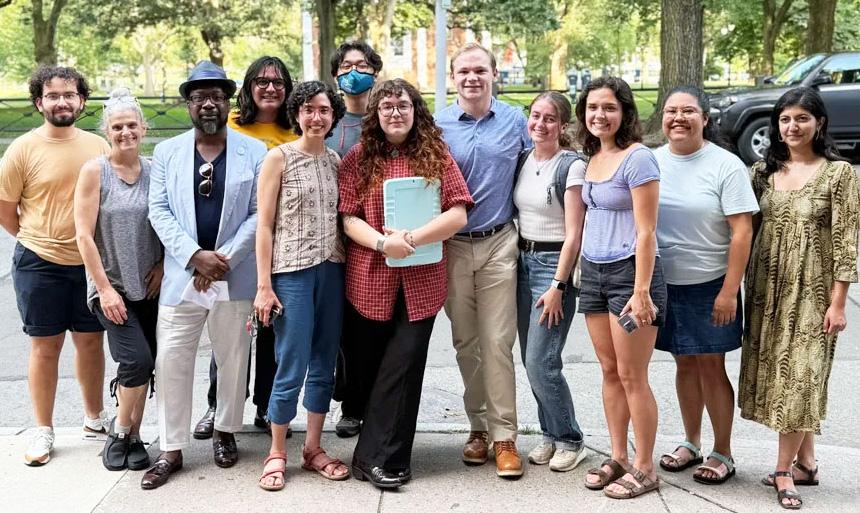
community and support by banding together with others who also felt the weight of Yale’s broken promises,” she said.
Laughter described her home town of Russellville, Kentucky as small, working-class, and gutted by the coal industry and right-wing politics. She said she came to Yale already skeptical of institutions that consolidate wealth while underdelivering for the people who sustain them.
She pointed to the Schwarzman Center named after Stephen Schwarzman, CEO of Blackstone and a Trump mega-donor as emblematic of the contradictions between Yale’s public mission and its financial alliances.
Laughter praised the ongoing work of local coalitions such as New Haven Ris-
ing and Students Unite Now, groups she said have helped secure key wins like increased local hiring, greater financial contributions from Yale, and student aid reforms. If elected, she said she would prioritize racial equity, affordable housing, mental health resources, and the need to center student workers and residents alike in city decisions.
“I’ve come to love this city and the people who welcomed me in shared anger,” Laughter said. “My love for New Haven has made me bolder.”
Two speakers at the campaign launch underscored that commitment. Shams Goodwin, a room service server at the Omni
New Haven Hotel and a recent strike participant, praised Laughter’s solidarity with workers.
“During the strike, she showed up. Not just once, but many times. Even better, she brought lots of friends to the picket line during the day and at night,” he said. “She clearly shows up for workers on and off campus … That’s the kind of alder I’d like to see.”
Tenzin Jorden, a Ward 22 co-chair who has worked alongside Laughter in the Democratic Town Committee, also spoke at the event and highlighted her record of organizing on and off campus. “Norah has consistently participated in often invisible
work that makes local change possible,” Jorden said. “She is principled, fiery, and deeply caring. She knows how to spark people to action and how to be consistent. We need representatives who get angry at injustice, like she does.”
In an interview with the Independent, Laughter said her campaign is grounded in the coalition she has already helped build.
“I have organized to build capacity with students who are engaging with the fights in New Haven for a fully funded city,” she said.
She emphasized that she is running on a platform that includes affordable housing, good union jobs, and youth and educational opportunities. Laughter also highlighted the importance of Yale students in leveraging power to hold the university accountable.
“Ward 1 has a lot of students and it’s mostly Yale. Students occupy a very specific place in the dynamic of the city where they can leverage power against Yale to make them pay their fair share,” she told the Independent.
In addition to her organizing work, Laughter is currently working on her senior thesis in American Studies, which explores social movement coalition-building in 1970s and 1980s Louisville, Kentucky. She is collecting oral histories from former organizers involved in everything from anti-apartheid protests at the University of Louisville to local Rainbow Coalition campaigns.
Laughter said that the key to boosting student turnout is grassroots organizing empowering students to recognize their personal stake in local issues and helping them feel confident sharing their stories.
She added that she hopes to engage more students in the political process and ultimately increase voter participation in Ward 1.
by Donald Eng
HAMDEN,
CT — Hamden Democrat
Josh Elliott focused on public education, mental and behavioral health services, and municipal support in his campaign video announcing his challenge to two-term Democratic Gov. Ned Lamont in 2026. Elliott, 40, who used locations in Hamden, New Haven, and Norwalk among other places around the state as a backdrop, said state policies have hurt working residents.
“For the past six years, Connecticut has been severely underinvesting in its public education, public services and municipalities, all while the regressive, backward tax structure here in Connecticut places the cost of our unmet needs on the backs of working families,” he said. “For Con-
necticut’s educators, health care workers and housing advocates, the story’s always the same. Costs go up. The state makes cuts. Workers suffer, and as a result your property taxes increase to make up the difference.”
Despite the struggles Elliott described, prosperity does exist in the state, he said. “In fact, for one group it’s going great,” he said as he showed a graphic indicating the disparity between income tax as a percentage of income between different levels of income.
“I want to live in a Connecticut that doesn’t cement wealth for the few, but builds prosperity for the many,” he said.
Lamont, who has not yet announced whether he will run for re-election but

has strongly hinted he would seek another term, said Monday morning that he and Elliott were in agreement on many topics.
“We’re all about affordability and opportunity, that’s what we’re doing right here,” he said during a media briefing about an energy efficiency program for low income homeowners in New Haven. “We both agree on that.”
Lamont said his administration also had doubled down on municipal aid and done more on education, environmental issues and housing than previous administrations.
“But, I think he says we should be doing more,” Lamont said.
Asked about Elliott’s goal of making Connecticut’s tax structure more progressive, Lamont called tax hikes a last resort, but pointed out the income tax had be-
come more progressive due to some middle class and working class tax reductions.
“We’re doing what we can to make this a progressive state, and not only that, make it more affordable for our young people and our seniors,” he said. “We’re growing the economy, people are moving into the state.”
Elliott is the first Democrat to begin campaigning for governor.
Among Republicans, Westport First Selectwoman Jennifer Tooker announced her bid for governor in May, New Britain Mayor Erin Stewart has formed an exploratory committee to investigate a run for governor, and Greenwich state Sen. Ryan Fazio has publicly expressed interest in running.
by Thomas Breen
Incumbent Democrat Justin Elicker outraised Republican challenger Steve Orosco $30,131 to $6,595 over the past three months, according to newly released campaign finance reports for this year’s mayoral race.
Those reports also show that Jason Bartlett, a former Harp administration official and local mayoral campaign veteran, has taken on the job of helping Orosco try to topple the three-term incumbent.
Elicker’s reelection campaign and Orosco’s challenge campaign uploaded those second-quarter campaign finance reports to the State Elections Enforcement Commission’s database Thursday, which was the deadline for campaigns to report out how much money they raised and spent between April 1 and June 30.
Elicker, who is seeking a fourth two-year term as mayor, raised a total of $30,131 in individual contributions. That means he has raised a total of $139,410 over the course of the campaign so far. Elicker’s campaign spent a total of $37,112 in the second quarter, leaving a balance on hand of $85,650.
Orosco, meanwhile, raised a total of $6,595 in the second quarter; he entered the race in late March, and didn’t do any fundraising in the first quarter. Orosco’s campaign spent a total of $2,774 in the second quarter, leaving a balance on hand of $3,820.
As with each of his previous runs for mayor in 2013, 2019, 2021, and
2023 Elicker is participating this year in the city’s public financing program, the Democracy Fund. That program, which dates back to 2007 and was most recently updated last year, attempts to limit the influence of special interests and encourage more candidates to participate in mayoral races by capping the top amount of individual contributions at $400 apiece.
Some of Elicker’s $400 campaign contributors in the second quarter include Paul McCraven of Cheshire, the chief operating officer of ConnCORP; Guilford’s Diane Petra, of Petra Construction Corporation; Delaware’s Eugene Young, a senior vice president at Enstructure; and New York City’s Matthew Satnick, a logistics executive at Enstructure.
Orosco, a mixed-martial artist and frequent Republican candidate for different local and state offices, is not participating in the Democracy Fund. That means he can raise up to $1,000 per contribution.
Of the $6,595 he raised over the past three months, $4,000 came in the form of four $1,000 contributions from four different people: David Candelora, a landlord who lives in Madison; Jonathan Hryb, a chiropractor who lives in Northford; Joseph Milone, a New Haven paramedic; and Lisa Milone, the city’s Republican Registrar of Voters and Orosco’s campaign treasurer.
Orosco’s Q2 campaign finance report also shows that he has paid Jason Bartlett a total of $2,500 including $1,500 on June 20 and $1,000 on June 24. Bartlett served as the youth services administrator under
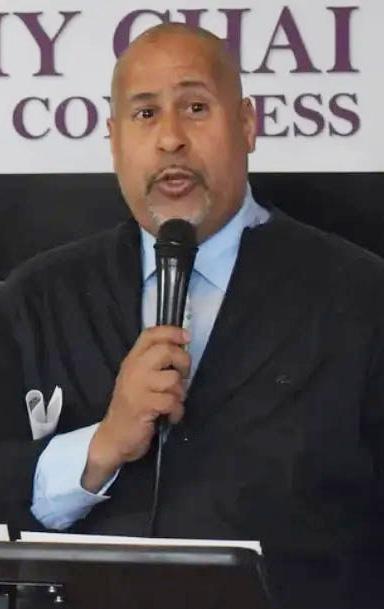
former Mayor Toni Harp; he’s worked on mayoral campaigns in New Haven dating back to 1999, including for Jim Newton, Martin Looney, Toni Harp, Tom Goldenberg, and, now, Orosco.
In a phone interview Friday, Bartlett said he is working as a “general strategist” on behalf of Orosco’s campaign, trying to
Yale New Haven Hospital is pleased to offer patients and their families financial counseling regarding their hospital bills or the availability of financial assistance, including free care funds.
By appointment, patients can speak one-on-one with a financial counselor during regular business hours. For your convenience, extended hours are available in-person at Yale New Haven Hospital once a month.
Date: Monday, July 21, 2025
Time: 5 - 7 pm
Location: Children’s Hospital, 1 Park St., 1st Floor, Admitting
Parking available (handicapped accessible)
An appointment is necessary. Please call 855-547-4584
Spanish-speaking counselors available.
“help him put together a strategy” to win this year’s mayoral race.
“He’s a fresh face. He’s young. He’s an entrepreneur. I think he’s very independent,” Bartlett said in praise of Orosco. “I just think we need a fresh approach.”
Registered Democrats outnumber registered Republicans ten-to-one in New Haven, and all of the city’s contested elected positions are currently held by Democrats. New Haven’s last Republican mayor was elected in 1953.
Bartlett also spoke on Thursday about his dissatisfaction with the incumbent as a motivation for him getting involved in this year’s election.
“I don’t think Mayor Elicker has a vision for the city. I have no faith in his leadership,” he said. He pointed to the city’s proposed sale of a currently state-owned lot on Sargent Drive to the APT Foundation for the construction of a new healthcare office building and methadone clinic as an example of the mayor’s “misplaced priorities.”
Bartlett described that deal as “ruining” Long Wharf with a methadone clinic.
In a separate interview Friday, Elicker pushed back on that critique.
“It’s really important that people get treatment” for substance use disorder, he said. “We need to facilitate people getting treatment.” He noted that APT already has an office at 1 Long Wharf, and that this planned new building would see them “move across the parking lot into a site that is a much better design, that is going to facilitate people in a responsible way getting treatment.”
He also pointed out that this agreement between the city and APT, which is still before the Board of Alders for review, would require APT to close its existing methadone clinic on Congress Avenue in the Hill. “This is going to be an immense improvement for people getting treatment,” he said. Asked more broadly about his Q2 campaign fundraising and his reelection campaign so far, Elicker said, “We’re in a confident position” and that, “when I can, I prioritize running the city over fundraising.”
“Big picture, we’re solving challenges that New Haven has struggled with for decades,” he said about his administration. He said New Haven consistently leads the state with the construction of new housing, with roughly 3,000 new residential units having come online over the past five years and another 7,000 in the pipeline. He praised the police department for adopting new technology to help solve gun-related crimes, and said his administration has increased the city’s contribution to the public school district by more than 50 percent in recent years. He praised the recently launched New Haven Tutoring Initiative for helping improve math and literacy competencies among students, and said school absentee rates are down. “The city is more financially stable than it’s been in decades,” he added, with rating agency upgrades and budget surpluses.
While there’s still more work to do, he concluded, “we’re making huge progress on all these issues.”

By Stacy M. Brown Black Press National Correspondent
Prices across the United States are about 26% higher than before the COVID-19 pandemic, pushing everything from a weekend hotel stay to a simple cup of coffee out of reach for many families. A budget hotel room in Nashville can now cost $500 for the weekend—without breakfast—and a single cup of coffee can cost $7. Rental cars are also commanding premium rates, with four days in a midsize Toyota Camry easily topping $670. It’s so bad in America that a foreign news organization dug into the pricey details. The Times of London reported that inflation, which began accelerating in 2021, has left American consumers grappling with the most persistent cost increases in decades. According to NerdWallet data cited in the report, the impact has been felt across every income bracket, fueling a growing sense that even basic experiences are becoming unaffordable.
Hotel rates have climbed 24% over the past decade, The Times reported. In Manhattan, the average nightly rate hit a record $417 in September 2024, according to real estate analytics firm CoStar. Miami Beach hotels averaged $283 a night last year, up from $230 in 2019, while Las Vegas rooms rose to $198, up nearly 41% over the same period. Rental car prices surged early in the pandemic and remain high. While rates stabilized over

the past year, costs have increased 29% since 2015.
Airfares are technically down 18.5% compared to 2015, but The Times noted that this decline reflects airlines’ “unbundling” services to show lower headline fares while tacking on fees. Southwest Airlines, for example, ended its “bags fly free” policy and now charges $35 for the first checked bag and $45 for the second.
Dining and Groceries: Everyday Pain Points
Eating out has become markedly more
expensive, with restaurant prices up 49.3% in the last ten years. Fast food chains have been forced to raise prices due to wage increases, higher energy costs, and supply chain problems. A dozen large Grade A eggs averaged $6.23 in March before dipping to $4.55 by May, according to the Bureau of Labor Statistics. The Waffle House restaurant chain temporarily imposed a 50-cent surcharge per egg. Grocery essentials have spiked in price, The Times reported. Baby wipes that cost $4.99 four years ago now av-
By Stacy M. Brown Black Press National Correspondent
A report from the Employee Benefit Research Institute shows that Black Americans continue to face serious challenges in saving for retirement, even as their incomes grow.
The 2025 Retirement Confidence Survey, which included a special oversample of Black workers and retirees, found that the wealth gap remains wide at every income level. Among households earning $75,000 or more, only 33% of Black Americans reported having $250,000 or more in savings and investments, compared with 63% of non-Black Americans. Debt remains a significant barrier. 63% of higher-income Black households said debt is a problem, while just 45% of non-Black households at the same income level said the same. Nearly half of upper-income Black respondents said debt affects their ability to save or live comfortably in retirement.
While many Black Americans expressed confidence managing day-today budgets, fewer felt prepared to invest or plan for the long term. The study showed that Black Americans with higher incomes were less likely to

have personally saved for retirement, 77%, compared with 87% of nonBlack Americans. Retirement experiences also differed sharply. Forty-four percent of Black retirees said they retired earlier than planned because of a health problem or disability, compared with 32% of non-Black retirees. After leaving their main jobs, Black retirees were more likely to work for pay to make ends meet, and more often said their retirement lifestyle was worse
than expected. Access to financial advice and planning remains uneven. Just 31% of Black respondents reported currently working with a financial advisor, although nearly half expect to do so in the future. Black Americans were more likely to seek help with reducing debt, creating wills or estate plans, and arranging life insurance than simply determining if they had saved enough to retire.
Researchers Craig Copeland and Lisa Greenwald wrote, “Black Americans reported disproportionately lower financial resources, and how they feel about retirement and financial security is clearly impacted by having less resources.” They continued, “In particular, Black retirees are struggling with higher likelihoods of their retirement lifestyle being worse than expected and having to retire earlier than planned because of a health problem or disability.” “Still,” the researchers concluded, “there are some modifications in the financial system that could help improve their prospects, such as increased assistance in balancing competing financial priorities like debt reduction, supporting family, and building long-term savings.”@ NNPA_BlackPress @BlackPressUSA
The price of live entertainment has soared. NerdWallet figures show concert and theater tickets are up 39% since 2015. The most recent Broadway season was the priciest on record, averaging $129 per ticket, and top shows often exceed $1,000 a seat. Dolly Parton’s December Las Vegas shows sold out in minutes, with resale prices climbing to $1,600. At Disney parks, costs have risen steeply.
A four-day Walt Disney World trip for a family of four, including a Disney hotel, cost $4,266 last year, more than $1,000 from five years earlier, The Wall Street Journal reported.
erage $6.63, while a unit of dog food jumped from $5.78 to $8.42, according to NielsenIQ.
Lindsay Owens, executive director of the Groundwork Collaborative, said some companies have exploited the situation for profit. “They decided to see if they could pass along all of their rising costs so that their margins wouldn’t be eaten into,” Owens told The Times. “And when they realized that they could, they decided to go for more.”
While inflation has retreated from its 9% peak in 2022, The Times cautioned that Americans shouldn’t expect relief anytime soon. New tariffs introduced by the Trump administration are expected to drive prices even higher in the months ahead. With costs still climbing, many households are left with tough decisions about which necessities—and experiences—they can continue to afford. “We’re often seeing the highest demand in the luxury space,” Sally French, a NerdWallet finance expert, said. “People want the hotel that’s going to make for an amazing photo… People are spending more on higher-end things they wouldn’t have done in the past.”
Twitter /Handles: @thetimes
By April Ryan
“This is the federal seizure of power,” according to Los Angeles Mayor Karen Bass, who emphasizes that the Trump administration has federalized the National Guard, seizing power from California Governor Gavin Newsom. She says the administration has “taken his ability to manage the National Guard.” This week, Bass filed a lawsuit against the Trump administration regarding his immigration measures in the city, which she considers “overreach.” She wants the federal authorities out of LA. According to Bass, there are three components to this: political, humanitarian, and economic. Calling Los Angeles a “Petri dish” that President Trump is “experimenting” with.
The President's move to federalize the National Guard in LA has usurped local authorities. “The LAPD is definitely not in charge,” says the first Black woman mayor of the city. However, ICE, the National Guard, Border Patrol, and the Marines “blend together” in policing and arresting Mexicans, Koreans, Iranians, and Haitians in Los Angeles. The mayor reminds that there has been an instance when the public sees these immigrant arrests, where some residents perceive it as “kidnappings.” In one example, the mayor says there was a “bit of a confrontation with the public, ICE, and the LAPD. Bass

says, “It’s a mess.”
3.8 million people call Los Angeles home, which is “overwhelmingly a city of color,” with almost half of the population being Latino, the majority from Mexico. The mayor says a lot of that number is from Central America. Asians make up 25% of the city's population, and African Americans make up 9%. “Parts of Los Angeles are empty because people can’t go to work.” Bass says,” entire industries in the city of Los Angeles are totally dependent on migrant labor,” like the 'garment district,' she calls a 'ghost town' right now. Ethnic restaurants say this is 'worse than Covid as people don't even want deliveries.”





• Cremation (Choose to be cremated at Evergreen.)
• Columbarium in the Most Beautiful Cremation Garden
• Reserve your Niche in a secure location pre-need.

• Reserve a Niche for family and friends or purchase at-need to safely place your Loved One in the Columbarium.
• Burial Lots (infant, single, two-grave, or four-grave)
• Monuments & Markers (black, gray, or pink granite)
• Flower placement (single or multiple placement)
• All orders can be placed at the Evergreen office or the website.

A collage of books by Black creators highlights the diversity of Black voices and stories in contemporary literature. (Visual: Serenity Armstrong/HUNewsService.com)
By Serenity Armstrong Howard University News Service
WASHINGTON – For centuries, Black literature and art were destroyed and plagiarized while Black individuals were “inhumanely” beaten, imprisoned and killed for even attempting to learn to read or write.
Ongoing prejudice and inequalities further perpetuate the resulting literacy gap, limiting education and social mobility opportunities for the Black community. Despite facing systemic discrimination, Black authors and illustrators continue to publish works providing representation critical to improving historically low and disparate literacy rates among Black children and adults, according to recent studies.
This chart shows the average adult score on the Program for the International Assessment of Adult Competencies (PIAAC) literacy test by racial and ethnic group in the United States for 2012/14, 2017 and 2023. (Chart: Serenity Armstrong/HUNewsService.com)
Between 2017 and 2023, the average adult literacy score dropped more than 10 points.
This marked nearly 50 million Americans unable to read above a third-grade level.
According to the assessment, Black adults comprised a disproportionate number, with half scoring in the lowest literacy range or below.
Research indicates books with Black authors and illustrators “exponentially” increase literacy rates – not only for Black individuals but also for white and other ethnic groups.
However, only about 5% of published books have Black creators, according to Lee & Low Books’ quadrennial report.
“It is not a lack of desire that hinders Black students from developing their literacy skills,” English teacher Aleah Felton said. “Rather, it is possible that the methods no longer support the literacy development.”
In a curriculum project, Felton explained that Black students are more inclined to focus and engage when other Black voices are involved in class content, using her experience as an example.
“My academic career consisted of a standard white canon of literature,” Felton said. “I lost my love for reading. No amount of threatening from my mother could have persuaded me to read for school.”
Felton’s interest in reading rekindled with her discovery of a Black-authored book in the fifth grade.
“For me, there was a direct correlation between Black authorship’s presence in the classroom, my engagement in the set curriculum, and my skill development,” she said.
Still, publishers overlook many Black authors, and representation in literature largely remains minimal or nonexistent in

public school systems.
Exclusion and Publishing Obstacles
To publish a book, authors have two main routes: traditional publishing and self-publishing.
In traditional publishing, authors must find a literary agent willing to present their manuscripts to publishing houses and negotiate contracts.
Meanwhile, self-publishers complete the entire publishing process themselves, including editing, designing, printing and marketing.
Kathy Anderson and Karen Bowlding, consultants for Black children’s book authors in the Washington D.C., metropolitan area, published research last year detailing the obstacles faced by Black book creators.
“Traditional publishing has a pronounced and unjust deficiency of Black and African American voices,” their research stated. “Mostly white literary agents are gatekeepers, and acquisition editors shut the doors too frequently to non-white authors.”
More than 80% of the traditional publishing industry is controlled by five “white-dominated” companies: Penguin Random House, HarperCollins, Simon & Schuster, Hachette Book Group and Macmillan.
These companies’ values, beliefs and majority white editors influence who and what is published.
“There are proposals that come along, and you know in your heart that this is an important book on an important subject,” the research stated, citing Tracy Sherrod, an editorial director at HarperCollins at the time. “But, because the editorial room is all white, you may not be able to acquire it.”
Creative nonfiction editor and Howard University English professor Sufiya
Abdur-Rahman could not traditionally publish her 2021 memoir, “Heir to the Crescent Moon.”
“I started looking for agents, and the process for doing that was very slow,” she said. “Agents would not get back to you for a very long time. Then they would say no, so I felt like I was wasting a lot of time.”
For years, Abdur-Rahman attempted to publish her book, often finding herself being the only Black person in her writing spaces.
In search of community, she applied to the Voices of Our Nations Art Foundation, which hosts a writing conference for and by writers of color.
According to Abdur-Rahman, connecting with others in a more diverse setting is what allowed her to receive more positive responses and better feedback for “Heir to the Crescent Moon.”
She tried to find a publisher by herself and nearly gave up on the book before winning a competition with publishing as the prize.
“Without a contest like that, I seriously doubt that my book would have made it to the public’s eye,” Abdur-Rahman said. “If you’re doing something different that doesn’t have a built-in audience quite yet, [agents and publishers] are not as willing to take risks with that kind of work.”
Disproportionate Book Bans
Even after successfully publishing, many Black book creators face a risk of book ban that is more than four times greater than that of white creators.
Even after successfully publishing, many Black book creators face a risk of book ban that is more than four times greater than that of white creators.
In a post on X, formerly known as Twitter, politician Stacey Abrams explains that her 2020 book “Our Time Is Now” was banned from the U.S. Naval Academy’s library. She linked her MSNBC interview about the book and its banning. (Screenshot: Serenity Armstrong/
restricting Critical Race Theory following President Donald Trump’s order in September 2020.
Representation in the Literacy Crisis
Coinciding with the racial disparities in publishing and book bans is another racial disparity in reading literacy.
Similar to previous years, Black students scored lower in reading than students of any other race or ethnicity in the district and nearly every state, according to the “Nation’s Report Card.”
Many literacy advocates and educators argue that representation is necessary for improvement, making Black authors and illustrators key to the solution.
In addition, researchers conducted a causal study, showing that culturally relevant instruction increased student attendance, grade point average and total number of credits earned.
HUNewsService.com)
In a limited snapshot of book censorship, the American Library Association reported that more than 4,000 books were challenged, marking a historic high in an “extremist campaign to suppress access to books that began in 2021.”
Meanwhile, data from PEN America showed a nearly 200% increase in school book bans between the 2022 and 2023 school years.
Of those banned in the latter, nearly 40% featured characters of color. Over a fourth in the historical and biographical genres featured Black figures.
The majority of banned books with visual content had illustrations regarding race, racism or characters of color.
“We can’t be silenced,” said Jody Paschal, an author and educator. “Whether we’re going through a traditional publishing house or we’re self-publishing, we have to make sure that our history is a must.”
Paschal feared her 2024 book “Groomed” would be banned.
“I wanted to publish it before the election happened because I didn’t know what was going to be happening,” she said. “That was terrifying. But again, I think it fueled me to write even more, just knowing that it was kind of an act of resistance.”
Considering the history of Black people in America, Paschal believes publishing her book was especially gratifying.
“They went through a lot, and I feel very blessed,” she said. “To put a story out there, I feel like I’m fulfilling our ancestors’ dream in some sort of way.”
Like Paschal, Stephanie Walcott, who works at Mahogany Books, said the disparity in book bans was disappointing but not surprising.
“Honestly, this political climate is not necessarily new,” Walcott said.
Organized efforts to restrict access to Black literature were documented since at least the 1920s.
Some attribute the most recent book-banning movement to the rise in legislation
“As far as representation goes in general, it is always important to see someone like yourself in different spaces,” said Alexander Foley, a service clerk. “It just opens up a lot of avenues for younger generations to feel inspired to do the things that they would want to do.”
Maryland resident Olivia Hawkins emphasized how surprised she was by the lack of representation when she went to college.
“Growing up in [Prince George’s] County, it’s Black people everywhere. It’s amazing,” she said. “Then, for college, I went away. … It was like the world is white.”
Hawkins felt alienated. She described the change as a “culture shock,” expressing that the lack of representation definitely made a difference.
“Representation is important because Black people exist,” Hawkins said. “If you’re not including them in your stories and in your works of art, of written work, then you’re almost erasing them.”
Like Foley, Hawkins said underrepresentation could interfere with Black students’ participating and excelling in many areas, using her experience on the swim team as an example.
“In high school, we would go to these swim meets, and most of our team was Black. But, we were the only Black team there, and it was like anxiety,” said Hawkins, who was also the only Black girl on her college swim team.
Foley shared a similar experience. He said that the lack of representation creates stereotypes, making people – especially Black children – think certain things, like swimming, “were not for us.”
According to Anderson and Bowlding, this same concept also applies to reading.
“The Black Book Scale,” designed by Aleah Felton, shows educators what to consider when incorporating Black literature in their curricula. (Screenshot: Serenity Armstrong/HUNewsService.com) They emphasized that representation was not equivalent to talking about slavery or any other “white-accepted” themes.
“Black and African American children’s books do not need to have an expressed
Wastewater Treatment Plant Operator (Attendant III): Operates and maintains equipment and processes in a municipal sewage treatment plant. Requires an H.S. diploma or GED. A State of CT Dept. of Energy and Environmental Protection (DEEP) Class III Operators License or higher certification; or a Class III Operator-in-training or higher certification plus three (3) yrs. of experience in the operation of a class II or higher wastewater treatment facility, with one (1) yr. in a supervisory capacity of foreman level or higher. Must possess and maintain a valid driver’s license. Wages: $ 32.24 to $ 36.79 hourly. The Town offers an excellent fringe benefits package that includes pension plan, paid sick and vacation time, individual and family medical insurance, life insurance, 13 paid holidays, and deferred compensation plan. The closing date will be July 22, 2025. To apply online, please visit: www.wallingfordct.gov/government/ departments/human-resources/. Applications are also available at the Department of Human Resources located in Room #301 of the Town Hall, 45 South Main Street, Wallingford, CT 06492. Phone: (203) 294-2080; Fax: (203) 294-2084. EOE
Replacement of
360 Management Group is currently seeking bids from qualified and licensed contractors to replace 20 wall hung on-demand water heaters at Twinbrook Development. A complete copy of the requirement may be obtained from Elm City’s Vendor Collaboration Portal https://newhavenhousing.cobblestonesystems.com/gateway beginning on
Monday, July 14, 2025, at 3:00PM.
Extremely fast paced petroleum company is looking for a full time (which includes on call and weekend coverage) detail oriented experiencedDispatcher. A strong logistics background and a minimum of one year previous experience is required. Send resume to: HR Manager, P.O. Box 388, Guilford, CT. 06437. Email: HRDEPT@eastriverenergy. com
*An Affirmative Action/Equal Opportunity Employer, including Disabled and Veterans*
Project Management Consulting Services - 64-66 Wasson Avenue, Lackawanna, New York. (Section 141,43, Block 2, Lot 20,21,22,23,24,25,40,41,42,43,44,45,46,47,1)
The Glendower Group is seeking proposals from firms for project management services for a Project located at 64-66 Wasson Avenue. New York. A complete copy of the requirement may be obtained from Elm City’s Vendor Collaboration Portal https://newhavenhousing.cobblestonesystems.com/gateway beginning on
Wednesday, July 16, 2025, at 3:00PM.


OF THE CITY OF NORWALK, CT IS REQUESTING PROPOSALS FROM QUALIFIED CONSULTANT FOR STRATEGIC PLANNING SERVICE. TO OBTAIN A COMPLETE COPY OF THE REQUEST FOR PROPOSAL DOCUMENTS, CONTACT GUILLERMO BENDANA, PROCUREMENT SPECIALIST AT GBENDA@NORWALKHA.ORG PROPOSALS ARE DUE AT 2:00 P.M. ON 08/18/2025. NORWALK HOUSING IS AN EQUAL OPPORTUNITY EMPLOYER. ADAM BOVILSKY, EXECUTIVE DIRECTOR.
Architectural Services-64-66 Wasson Avenue, Lackawanna, New York., (Section 141, 43, Block 2, lot 20,21,22,23,24,25,40,41,42,43,44,45,46,47,1,)
The Glendower Group is currently seeking qualifications from qualified firms for Architectural Services. A complete copy of the requirement may be obtained from Elm City’s Vendor Collaboration Portal https://newhavenhousing.cobblestonesystems.com/gateway beginning on
Wednesday, July 16, 2025, at 3:00PM.
Ducci Electrical Contractors, Inc. seeks a friendly, organized, and professional Front Desk receptionist. Must be reliable, have strong communication skills, and able to multi-task. Ability to answer multi-line phones system. This is a full-time position. Send resume to Ducci Electrical Contractors, Inc. 74 Scott Swamp Rd. Farmington, CT 06032 or via email athumanresources@duccielectrical.com. An affirmative action equal opportunity employer.
HARTFORD RESIDENTS, APPRENTICES AND SECTION 3 RESIDENTS ARE STRONGLY ENCOURAGED TO ATTEND
HIRING ALL TRADES! Demolition – Framing – Drywall – Painting – Cleaning – Electrical – Plumbing – HVAC – Concrete – General Trades – Flooring - Roofing
CONTRACTORS AVAILABLE FOR ON-THE-SPOT INTERVIEWS!

DATE: THURSDAY, JULY 24, 2025, from 1 PM – 4 PM
LOCATION: 127 Martin Street, Hartford, CT
For more information, please contact Jennifer Lacombe PH: 203-888-8119 EMAIL: jlacombe@haynesct.com The Housing Authority of the City of Hartford


Performs tasks in facilitating the purchase of a wide variety of materials, supplies, equipment and professional services. The position requires an associate’s degree in business administration and 3 years purchasing experience. A bachelor’s degree in business administration may substitute for 2 years of the work experience. $32.08 - $38.98 hourly, (contract currently under negotiations). The Town offers an excellent fringe benefits package that includes a pension plan, generous paid sick and vacation time, medical/ dental insurance, life insurance, 13 paid holidays, and a deferred compensation plan. To apply online by the closing date of August 4, 2025, please visit: www.wallingfordct.gov/government/departments/human-resources/. Applications are also available at the Department of Human Resources located in Room #301 of the Town Hall, 45 South Main Street, Wallingford, CT 06492. Phone: (203) 294-2080; Fax: (203) 294-2084. EOE

The Town of Wallingford is seeking qualified applicants for the position of Assistant to the Animal Control Officer to perform highly responsible work in the enforcement of local and State ordinances, regulations and statutes pertaining to municipal animal control activities. The position requires a H.S. diploma or equivalency plus 2 years of experience as an animal care worker in a kennel, animal control facility, veterinary hospital or boarding facility or State of Connecticut certification as an Animal Control Officer and 6 months of experience as an animal care worker. Must possess and maintain a valid State of Connecticut Motor Vehicle Operator’s License and must be able to be “on site” within a 30-minute period when responding to all calls from the Wallingford Police Department. $23.56 to $27.94 hourly plus an excellent benefits package. The closing date will be July 14, 2025. To apply online, please visit: www.wallingfordct.gov/government/departments/human-resources/. Applications are also available at the Department of Human Resources located in Room #301 of the Town Hall, 45 South Main Street, Wallingford, CT 06492. Phone: (203) 294-2080; Fax: (203) 294-2084. EOE
The Town of Wallingford Sewer Division is seeking a skilled manager to provide responsible technical, administrative and supervisory work involving the operation and maintenance of wastewater pumping stations and the sanitary sewer collections system. Applicants should possess a B.S. degree in civil engineering, environmental engineering or environmental science, mechanical engineering or other engineering plus 4 years of experience in wastewater collection and in the repair and maintenance of mechanical and motorized equipment (pump stations), or an equivalent combination of education and qualifying experience substituting on a year-for-year basis. Must possess and maintain a valid State of Connecticut Commercial Driver’s License (CDL) Class B at the time of appointment. Must possess and maintain, or be able to obtain in the probation period, CDL tanker and air brake endorsements. Must possess and maintain, or be able to obtain in the probation period, a NEWEA certification as a Collection System Operator Grade II or higher. Salary: $87, 357 to $110, 894 annually plus on-call pay when assigned. The Town offers an excellent fringe benefits package that includes pension plan, generous paid sick and vacation time, medical/dental insurance, life insurance, 13 paid holidays, and a deferred compensation plan. To apply online by the closing date of July 29, 2025, please visit: www.wallingfordct.gov/government/departments/human-resources/. Applications are also available at the Department of Human Resources located in Room #301 of the Town Hall, 45 South Main Street, Wallingford, CT 06492. Phone: (203) 294-2080; Fax: (203) 294-2084. EOE
Please register here to obtain Bid Package: https://ha.internationaleprocurement.com/ requests.html?company_id=49968
SCOPE: The Housing Authority of the City of Danbury and its affiliates hereby issue this Request for Proposal from qualified Proposers to provide Modernization Management and Planning Services and act as the agency Modernization Specialist.
Housing Authority of the City of Danbury, 2 Mill Ridge Rd, Danbury, CT 06811 Envelope Must be Marked: RFP No. P25003 Modernization Management
SUBMITTAL
July 17, 2025 at 10:30am (EST) CONTACT PERSON FOR RFP DOCUMENT: Ms. Lisa Gilchrist, Purchasing Agent: 203-744-2500 x1421 E-Mail: lgilchrist@hacdct.org
[Minority- and/or women-owned businesses are encouraged to respond]
Washington DC, USA-December 13, 2014: This man is protesting police brutality at a protest led by Reverend Al Sharpton on Pennsylvania Avenue in Washington DC. He displays a sign with the message Black Lives Matter. Recently the deaths of Michael Brown, Eric Garner and Tamir Rice have upset the black community
By Stacy M. Brown Black Press USA National Correspondent
Black Lives Matter has reached its 12th anniversary, and the organization’s co-founder and prominent scholar-activist, Dr. Melina Abdullah, says the movement is not only growing internationally but also confronting what she described as an unprecedented wave of “fascism and unmasked racism.” During an appearance on Black Press USA’s Let It Be Known News, Dr. Abdullah detailed the recent summit in Los Angeles, where organizers from 51 chapters—including the newly established Black Lives Matter Stockholm—gathered for workshops, tours, an action, and a celebration at the Center for Black Power on Crenshaw Boulevard.
“This is the largest that Black Lives Matter has ever been,” Abdullah said. “We are now 51 chapters in 2025 and thousands of boots-on-the-ground organizers.”
The summit, which lasted several days, included discussions on the group’s principles and strategy. Abdullah noted that the movement’s work has taken on new urgency as attacks on Black communities intensify. “I think the world hasn’t seen this level of fascism and unmasked racism,” she said. “I haven’t witnessed a world where African American men from Texas, born and raised, the child descendants of enslaved people, can be deported.” Abdullah also described personal moments of fear, including seeing an un-

known truck parked in front of her home after delivering groceries to elders in the community. “I was going, should I get out my car? Because I don’t know who these two men sitting in this truck are,” she recalled. “And will somebody see me if they snatch me up?”
The BLM Grassroots leader announced the release of the organization’s annual action report, detailing initiatives ranging from mutual aid to political advocacy.
Among the work highlighted was the successful campaign to free Brittany Martin, who was sentenced to prison for remarks made to police during a 2020 protest in South Carolina. “This pregnant mother of six, now of seven, was arrested for simply speaking words,” Abdullah said. “She wound up being ripped away from her family, forced to have her seventh child inside the prison. But we kept fighting, and at the end of 2024, we were able to
free Brittany Martin.” In addition to campaigns for policy reforms like Wakiesha’s Law—requiring 24-hour family notification when a loved one dies in custody— the report describes BLM Grassroots’ youth scholarship programs, food distributions, and international solidarity work.
Dr. Abdullah also addressed internal conflict over financial stewardship within the broader BLM network. She said that while BLM Los Angeles purchased
By April Ryan
“Put a face on the deadliness of this big, bad, deadly, ugly bill.” That is what Reverend William Barber says as he conducts Moral Mondays in 11 Southern states today. He is laser-focused on 11 local U.S. Senate offices in Alabama, Arkansas, Florida, Georgia, Louisiana, Mississippi, North Carolina, South Carolina, Texas, West Virginia, and Tennessee. In these states, Barbers says 1.5 million people are expected to lose their healthcare due to federal funding cuts to Medicaid. Barber lamented that only one U.S. Senator, Thom Tillis of North Carolina, voted against the “One Big Beautiful Bill.” On July 1st, Tillis broke ranks with most Senate Republicans on the healthcare cuts. Tillis understands that federal cuts to Medicaid funding would hurt his constituents. Three days later, on July 4th, President Donald Trump signed the bill into law, which cuts $17 million from Medicaid in this country.
Barber, leading the protest in Memphis, Tennessee, says, “The highest

a community building used for mutual aid and youth programs, the Global Network Foundation bought what she called a “$6 million mansion” in Studio City. “Families of those who have been killed by police and white supremacy have been blocked from being able to ever use or set foot inside that house,” she said, adding that BLM Grassroots leaders recently visited the property to demand accountability and the return of resources. “We stood outside with at least six or seven family members and said, return the money, return the resources to the movement so that we can use it for the good of Black liberation.”
Abdullah said that repeated attempts to speak directly with foundation leaders— including letters, calls, and legal filings— have been met with silence or legal counteractions. “They’ve never spoken with us,” she said. “We would love to speak with them and ask them why they feel entitled to travel in private jets with makeup teams and stand on red carpets wearing couture.” She described BLM Grassroots’ philosophy of abolition and the need to dismantle systems that profit from Black suffering. “We have to transform a state that allows for and enables and really sometimes benefits and profits from the murders of Black people,” Abdullah said.
The full action report is available at blmgrassroots.org.
number of people who will lose Medicaid are in the south.” He emphasizes these massive cuts to Medicaid do not discriminate; however, “the highest percentage of Black people being kicked off of Medicaid is in the south.” Barber, who is also looking at the economics of these cuts, says, “40% of the South are poor now and low wage,” and that will further exacerbate the poverty numbers in this nation. These 11 marches will consist of a contingent of clergy and impacted people expected to march with caskets housing the number of people in that particular state who were negatively affected by the newly passed “One Big Beautiful” law.
The list of Medicaid losses according to Rev. Barber
Texas 300,000
Louisiana 291,000
Alabama 42,000
Arkansas 123,000
North Carolina 307,000
Moral Mondays will resume in the nation’s capital in August, according to Reverend Barber, who also says there will be a continued focus on these Con’t from page Black Authors and Illustrators
diversity or activist focus for a child to relate,” their research stated. “Too many of these didactic books miss the excitement and joy of Black adventure, fantasy, friendship or outdoor activity.”
Demonstrating this sentiment, both Abdur-Rahman and Paschal praised their mothers for providing them with a variety of Black books throughout childhood. “I remember my mother having to petition,” Paschal said. “Black people don’t all look the same. We don’t all experience the same, so seeing how other Black people live, experience, dream, work – it’s really, really important to influence us.”
Parents can find diverse book resources for children at Brown Kids Read, We Need Diverse Books and Black Baby Books.
Resources for teens and adults can be found on the African American Literature Book Club’s website.
Abdur-Rahman encouraged Black book creators to keep dreaming.
“Tell the stories of your own life and the people who are around you because those stories have value,” she said. “They are going to help somebody. … So, that resonance needs to happen on the page, and it needs to be there when you go to libraries and bookstores.”
Serenity Armstrong is a reporter and editor-in-chief of HUNewsService.com.



















